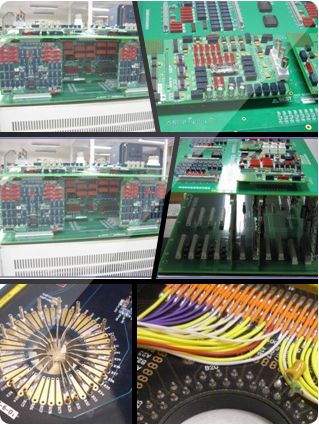
Highly Accelerated IOL
ATMPI’s highly accelerated Intermittent Operating Life (IOL) methodology is directly equivalent to MIL-STD-750 method 1037 and has multiple benefits to the engineer including:
• Continuous Measurement – The advantage is that rather than waiting for read points on the device for example at 500 temperature cycles, 1500, 7500 15,000 temperature/power cycles, the data is continuously gathered and so devices that are damaged by the cycling are seen much earlier. USEA has seen apparently “good” arts fail in as little as 200 temperature/power cycles. The implication to our customers is they have an accelerated warning that a lot is going to fail the IOL study.
• Provides Underlying Root Cause – The fact that ATMPI temperature cycles the devices and continuous tracks parameters such as VSD, RDSON, Vth, BVDSS, any MOSFET parameters, any IGBT parameter, diode related parameters, means that the trends in drift can be analyzed and provide additional insight into whether failure issues are related to specific parts of a device, e.g. drain, source or gate and whether failure a gradual process through migration of metal or a sudden failure due to bond failures.
• IOL Data – ATMPI’s highly accelerated and continuous data collection IOL studies includes full data analysis and concise report representation. The reduction of the IOL study duration from weeks to days in achieve through:
Continuous Data Tracking – ATMPI is continuously monitoring the electrical and thermal parameters of all the devices throughout the study and so if devices are showing significant changes during the study then ATMPI is able to call this very early in the study and a warning call can go to a customer within hours of starting the test.
Optimized Thermal Tracking – ATMPI is able to track the temperature of individual parts during the study and so ATMPI is able to accelerate the thermal cycling time between heating and cooling by individually tracking the parts, rather than waiting some arbitrarily long cool down time of two or three minutes. Knowing the exact temperature of each individual device throughout the study provides optimized temperature cycling and guarantees that each device was cycled at and between the required temperature.
Tested and Cycled in Place – ATMPI is continuously tracking the performance of each device through out the IOL study, as we are testing and cycling the device in the same fixture. Therefore ATMPI has eliminated handling errors when devices are manually transitioned between cycling stations and test stations
• Equivalence between Highly accelerated IOL vs. Traditional IOL- ATMPI has correlated the failures seen in traditional IOL studies with their Highly accelerated IOL studies and demonstrated that the failure mechanism is the same. This equivalence between ATMPI’s highly accelerated IOL studies with the traditional IOL studies come from two facts:
Same Active Heating – In both the ATMPI highly accelerated IOL and the traditional IOL, the source of heating comes from electrical power applied through the die, and so both tests are fundamentally identical.
Same Temperature Cycling – In both the ATMPI highly accelerated IOL and the traditional IOL, the devices under test are expected to temperature cycle from 25 °C to 125 °C. The advantage of the ATMPI highly accelerated IOL testing is that the exact temperature of the devices at any point with the IOL cycling is known and can be used in the understanding failures, outliers and maverick.
2025 ©Copyright. All rights reserved.
We need your consent to load the translations
We use a third-party service to translate the website content that may collect data about your activity. Please review the details in the privacy policy and accept the service to view the translations.
